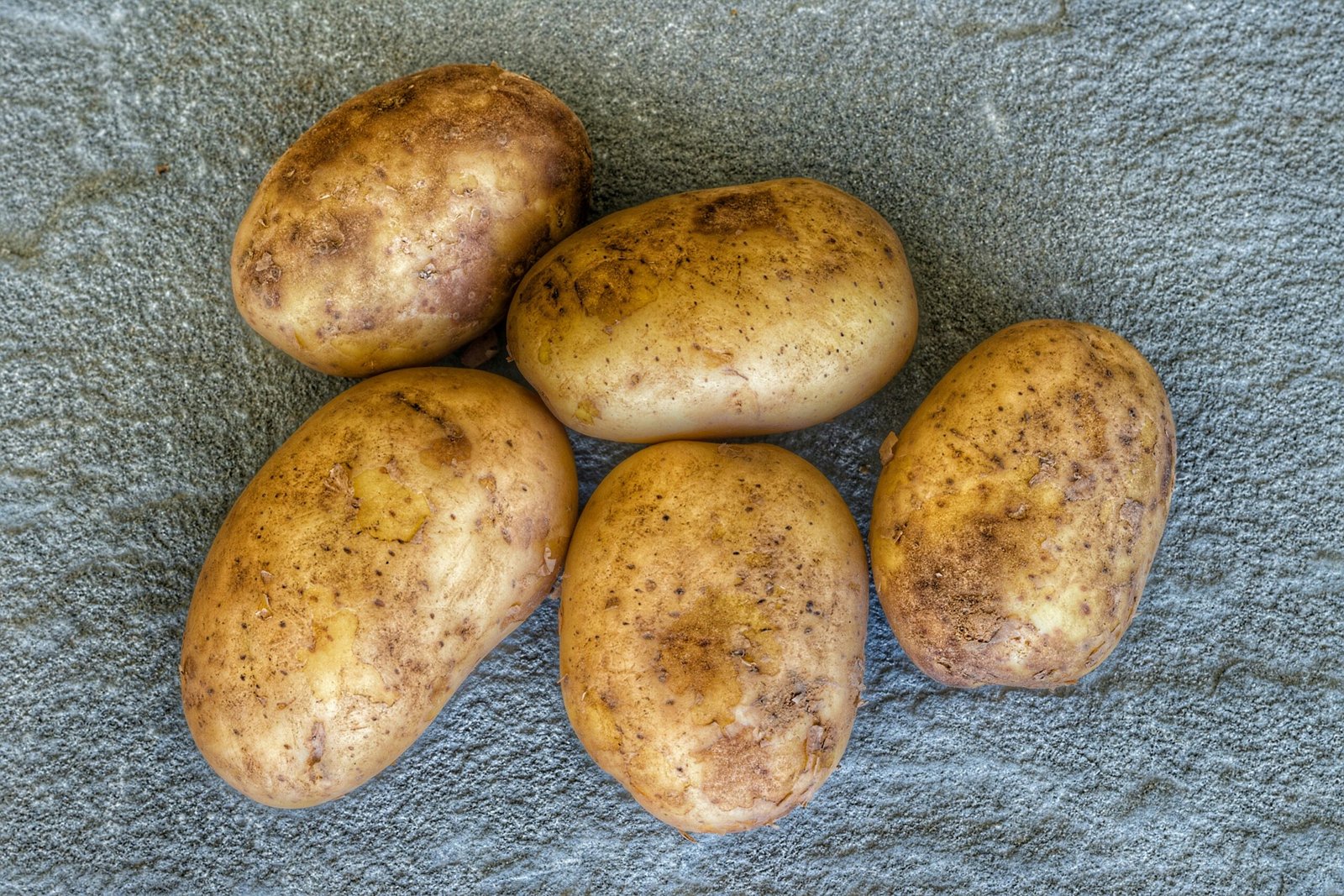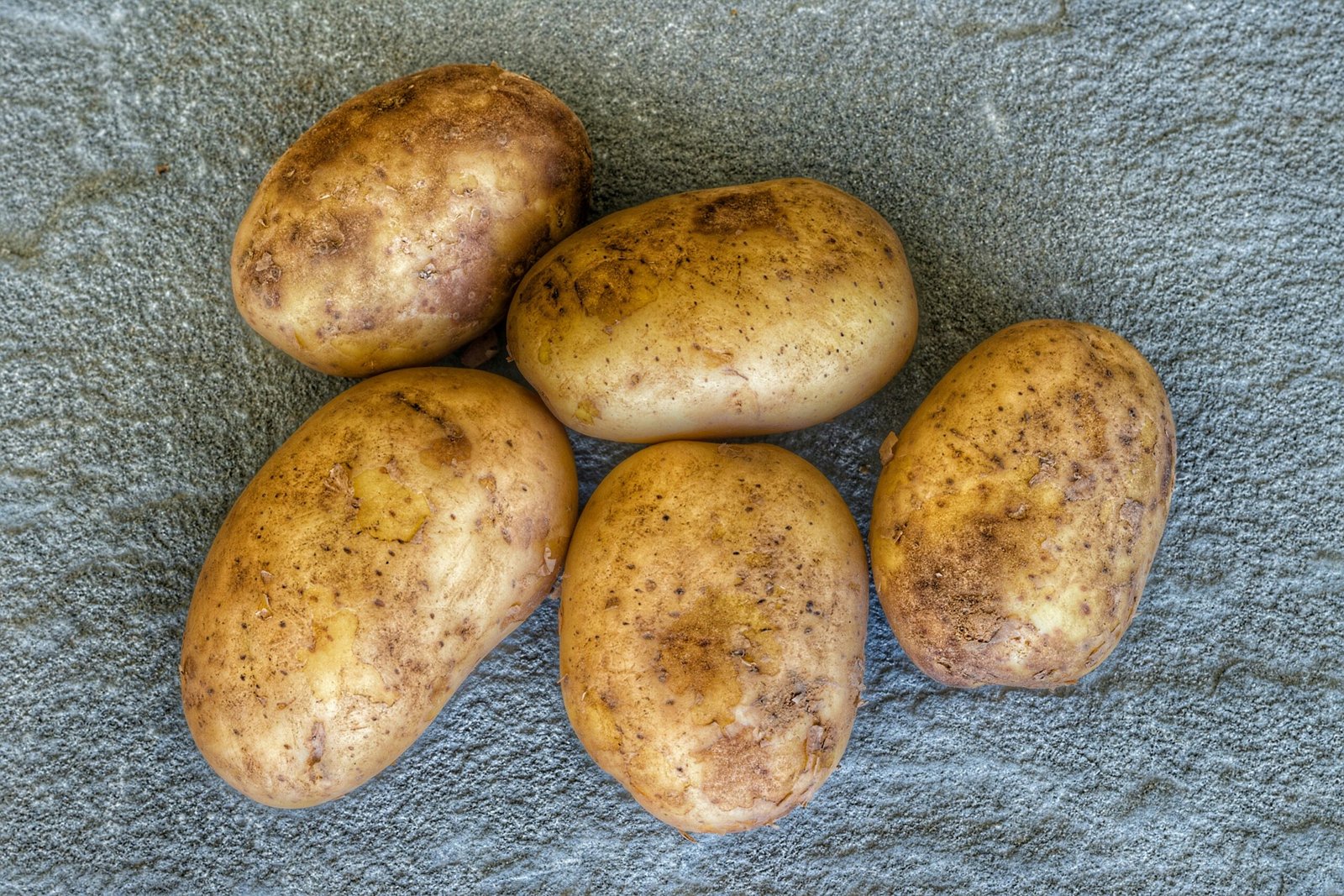Introduction to Potato Varieties and Starch Content
Potato is a global vegetable and has thousands of wild and cultivated varieties, each potato type offers unique characteristics that cater to diverse culinary uses. The classification of potatoes is primarily based on their starch content, which plays a pivotal role in determining their texture and flavor profile in various dishes.
Potatoes can be broadly categorized into three classifications according to their starch composition: waxy, starchy, and all-purpose. Waxy potato varieties, such as Red Bliss and fingerlings, possess a lower starch content and a higher moisture level, resulting in their firm texture. These types are ideal for dishes that require potatoes to hold their shape, such as potato salads or steaming, where the potatoes remain intact after cooking.
Conversely, starchy potatoes like Russet and Idaho are characterized by their higher starch content and lower moisture levels. This composition results in a fluffy interior when cooked, making them perfect for baking, mashing, or frying. The higher starch content in these varieties contributes to the delightful texture that many consumers expect from classic potato dishes.
All-purpose potatoes, such as Yukon Gold, provide a middle ground between waxy and starchy types, featuring moderate starch levels that offer a balanced quality suited for a variety of culinary applications. Understanding these differences in potato varieties and their respective starch content is essential for both home cooks and professional chefs, as it influences the cooking methods employed and the expected results in texture and flavor.
The agricultural significance of starch content in potatoes extends beyond culinary preferences, impacting yield and cultivation practices. Recognizing the starch content not only assists farmers in selecting appropriate potato varieties for specific climates and soil types but also enhances food security through the promotion of cultivar diversity.
Global Potato Production and Starch Composition
Potatoes are a staple crop grown around the world, with significant production levels reported across various countries. According to the Food and Agriculture Organization (FAO), the top potato-producing countries include China, India, Russia, and Ukraine. These nations contribute substantially to the global supply of potatoes, each cultivating distinct varieties that cater to specific market demands and climatic conditions.
China remains the leading producer of potatoes, focusing on high-yield varieties such as the “Yunshu” and “Qingshu” which are known for their adaptability and resilience. In contrast, India’s diverse agricultural landscape promotes a multitude of varieties, including the “Kufri” series, which are favored for their flavor and starch content. The choice of potato variety in each country is greatly influenced by environmental conditions such as soil type and climate, which play a crucial role in starch composition and yield.
The starch content in potatoes varies significantly based on genetic and environmental factors. Typically, potatoes classified as high-starch varieties, such as “Russet” and “Kennebec,” boast a starch content ranging from 18% to 22%. These varieties are preferred for their texture, making them ideal for baking, frying, and mashing. Conversely, lower-starch potatoes, such as “New Potatoes” and “Red Bliss,” exhibit 12% to 16% starch content, rendering them suitable for salads and boiling due to their waxy consistency.
Understanding the agricultural practices and genetic traits that influence starch composition is essential for the food industry, as they directly impact processing methods and culinary applications. As global demand for potatoes continues to rise, the interplay of production techniques, regional variations, and starch properties will shape the future of potato cultivation and utilization.
Implications of Starch Type on Culinary Uses
The potatoes starch is predominantly composed of two types: amylose and amylopectin. These starches play a significant role in determining the culinary applications of various potato varieties. Amylose, a linear polymer, tends to gel and create a firmer texture upon cooking. In contrast, amylopectin, which is a branched structure, results in a waxy consistency that is moist and sticky. Understanding the interaction of these starch types with heat and moisture is crucial for chefs and food manufacturers when selecting potatoes for specific culinary uses.
Moreover, the choice of potato can significantly influence the textural qualities of mashed potatoes. Starchy potatoes yield a somewhat light and airy mash, while waxy types can produce a denser and creamier result. Recognizing these distinctions allows culinary professionals to tailor their recipes for enhanced dish quality, depending on the desired texture and flavor profile.
In conclusion, understanding the implications of starch type on culinary uses is vital for elevating potato-based dishes. By selecting the appropriate potato variety, chefs and food manufacturers can optimize cooking methods to achieve desired textures and flavors, thereby improving the overall quality of their culinary creations.
Strategies for Enhancing Starch Content in Potatoes
Enhancing the starch content in potatoes is crucial for improving their quality and nutritional value. Various strategies have been employed to achieve this goal, including selective breeding, optimized agricultural practices, and biotechnological innovations. Each approach provides a unique pathway to increase starch levels, ultimately benefiting both producers and consumers.
Selective breeding has a long history in potato cultivation. By choosing specific varieties that exhibit higher starch content, breeders can develop new cultivars with improved characteristics. This process often involves cross-pollinating plants with desirable traits, followed by rigorous testing and evaluation of their offspring. Modern genetic techniques, including marker-assisted selection, enable breeders to identify and select the most promising potato candidates more efficiently, thereby expediently increasing the starch content in future crops.
Agricultural practices also play a pivotal role in maximizing starch accumulation in potatoes. Farmers can influence starch levels through careful management of growing conditions. Factors such as soil quality, temperature, and water availability directly impact starch synthesis in tubers. Utilizing the right fertilizers ensures that potatoes receive adequate nutrients during growth, particularly nitrogen and potassium, which are essential for optimal tuber development. Furthermore, implementing effective irrigation strategies helps maintain consistent soil moisture, further promoting healthy growth and enhanced starch accumulation.
Recent developments in biotechnology offer unprecedented opportunities for improving starch content in potatoes. Techniques such as genetic modification allow scientists to introduce specific genes that regulate starch metabolism. These innovations lead to the creation of potato varieties that are genetically engineered to have higher starch content while retaining other desirable qualities. Such advancements not only optimize production yields but also cater to the increasing demand for high-starch potato products in both culinary and industrial applications.
Through the combination of these strategies—selective breeding, optimized agricultural practices, and biotechnological innovations—potato producers can enhance starch content significantly, ensuring both economic viability and consumer satisfaction.





